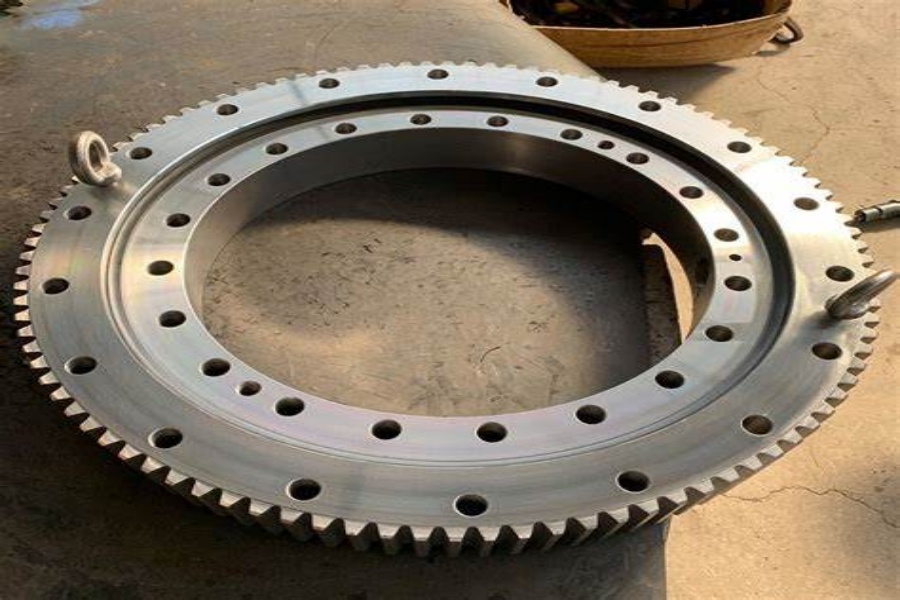
Light Load Slewing Bearings Precision Rotation for Compact Systems
As technological advancements continue to shrink machinery footprints while escalating demands for precision and reliability, Light Load Slewing Bearings have positioned themselves as indispensable components for achieving controlled rotational motion in tightly confined systems. These compact solutions address the paradox of modern engineering—delivering industrial-grade performance in applications where spatial efficiency cannot be compromised, from medical devices requiring micron-level accuracy to automated retail systems enduring high-frequency use. By merging material innovation with intelligent design, they circumvent the limitations of traditional bulky rotation mechanisms, offering engineers a way to enhance operational capabilities without inflating physical dimensions or production costs. This adaptability makes them a cornerstone in industries striving to balance miniaturization trends with heightened functional requirements, proving that reduced size no longer necessitates sacrificed durability or precision.
What is a Light Load Slewing Bearings
A Light Load Slewing Bearing is a compact rotational support component designed to handle axial, radial, and moment loads in systems where space efficiency outweighs extreme load capacity requirements. Typically featuring single-row ball or crossed roller designs, these bearings integrate raceways and rolling elements within slim profiles often measuring under 200 mm in diameter. Unlike heavy-duty industrial bearings requiring thick steel casings, light load variants utilize optimized heat-treated alloys or polymer composites to maintain structural integrity while minimizing weight. Their compact architecture makes them ideal for applications like robotic joint assemblies, rotating display platforms, or precision optical equipment where every millimeter matters.
Mechanics of Light Load Rotation Systems
The operational brilliance of these bearings lies in their ability to deliver smooth rotation despite minimalistic dimensions. Consider a robotic coffee machine’s rotating brew head that must align precisely with cup positions while resisting steam-induced corrosion. The bearing’s hardened stainless steel raceways and food-grade lubricant allow 10,000+ daily cycles without maintenance. In such systems, a motor-driven gear engages with external teeth machined onto the bearing’s outer ring, converting rotational input into controlled movement. Advanced models incorporate polymer cages to separate rolling elements, reducing metal-on-metal contact noise—a crucial feature for noise-sensitive environments like recording studio camera rigs.
Distinctive Advantages in Modern Applications
Light Load Slewing Bearings thrive where traditional solutions prove overengineered. Their primary strength emerges from three optimized characteristics:
Space-Saving Profiles:With cross-sections as slim as 15 mm, these bearings enable rotation mechanisms in devices where conventional bearings would dominate the design. Dental CT scanners utilize 180 mm diameter models thinner than a smartphone to rotate X-ray arms around patients’ heads without claustrophobia-inducing bulk.
Cost-Effective Precision:Simplified sealing systems and standardized sizing reduce production costs by up to 60% compared to custom heavy-duty bearings. This allows consumer product manufacturers to incorporate precision rotation in mid-range pricing tiers, visible in rotating smart home displays retailing under $200.
Adaptive Material Science:Modern variants employ glass-reinforced PEEK races for MRI-compatible medical equipment or ceramic-coated bearings for semiconductor cleanrooms. A brewery in Colorado even uses beer-resistant polymer bearings in automated keg washers where traditional lubricants would contaminate products.
Industry-Specific Implementations
The true value of Light Load Slewing Bearings manifests through their diverse real-world applications:
Medical Diagnostics:Portable ultrasound machines employ 120 mm bearings to swivel transducer arrays, enabling emergency responders to capture multi-angle scans without repositioning patients. The bearings’ EMI-neutral materials prevent interference with sensitive electronics.
Retail Automation:Interactive product kiosks in malls use 300 mm bearings to rotate demo units smoothly through thousands of daily customer interactions. Integrated dust seals protect internal components from popcorn debris and liquid spills common in public spaces.
Precision Agriculture:GPS-guided seed dispensers mount on bearings the size of dinner plates, allowing 270-degree field edge adjustments while traveling at 15 km/h. Their anodized aluminum construction resists fertilizer corrosion better than traditional steel in these applications.
Renewable Energy:Residential solar trackers employ UV-resistant polymer bearings to adjust panel angles daily, adding 18% energy yield without requiring the industrial-grade components used in utility-scale installations.
Measurable Performance Improvements
Adopters report quantifiable benefits across operational metrics:
Weight Reduction:Replacing conventional bearings with light load versions decreases robotic arm joint weights by 45%, enabling faster movement and lower energy consumption in automated assembly lines.
Maintenance Intervals:Sealed-for-life models in office building rotating doors now operate maintenance-free for over 5 years, compared to quarterly lubrication needs of previous systems.
Production Scalability:Standardized sizing allows bearing suppliers to stock universal models, reducing lead times from 12 weeks to 3 days for appliance manufacturers retooling product lines.
Noise Control:Incorporating nylon rolling element separators drops operating noise below 30 dB in library book retrieval robots—quieter than ambient room sounds.
Avoiding Critical Implementation Errors
Maximizing light load bearing performance requires awareness of common pitfalls:
Overestimating Load Capacity:Assuming “light load” implies unlimited durability leads to premature failure. A bakery conveyor’s bearing rated for 50 kg collapsed under 75 kg dough batches until upgraded to a medium-duty model.
Ignarding Environmental Factors:Standard seals fail in high-pressure washdown environments. Dairy equipment manufacturers learned this when bearings in cheese molding machines rusted within weeks until switching to stainless steel units with triple-lip seals.
Improper Mounting Techniques:Uneven base surfaces cause raceway distortion. A 3D printing farm eliminated bearing replacements by implementing granite surface plates for installation alignment verification.
Lubrication Mismatches:Using general-purpose grease in cold storage applications led to robotic freezer units seizing at -25°C until switching to low-temperature synthetic lubricants.
Future Directions in Compact Rotation
Emerging trends promise to expand light load bearing capabilities:
Smart Bearings:Prototypes with embedded load sensors now alert users via Bluetooth when approaching weight limits, tested in experimental wheelchair rotation mechanisms.
Sustainable Materials:Bamboo fiber-reinforced biocomposite bearings entered beta testing for eco-conscious consumer electronics, degrading safely if improperly discarded.
Additive Manufacturing:3D-printed titanium bearings with lattice-structured races achieve 30% weight savings for drone camera gimbals without sacrificing stiffness.
Light Load Slewing Bearings supplier
LYRA Drive is a professional slewing bearings ,slew drive and gears manufacturer provides customized slew bearing, drive and gears.For application-specific engineering solutions, contact LYRA to discuss technical specifications and implementation strategies



